(Page créée avec « Shake well before use. ») |
(Page créée avec « Keeps for several weeks/months without the need for a fridge. ») |
||
| Ligne 160 : | Ligne 160 : | ||
Shake well before use. | Shake well before use. | ||
| − | + | Keeps for several weeks/months without the need for a fridge. | |
}} | }} | ||
{{Notes | {{Notes | ||
Version du 16 juillet 2024 à 11:26
Description
Quick, economical and environmentally-friendly recipes for homemade deodorant.
Sommaire
Sommaire
- 1 Description
- 2 Sommaire
- 3 Introduction
- 4 Video d'introduction
- 5 Étape 1 - Details of ingredients
- 6 Étape 2 - Manufacture of coconut oil-based deodorants
- 7 Étape 3 - Making deodorant with bicarbonate and water
- 8 Étape 4 - Making deodorant with vinegar and water
- 9 Étape 5 - Making roll-on deodorant
- 10 Notes et références
- 11 Commentaires
Introduction
Deodorants are products that many of us use on a daily basis. But industrial deodorants are increasingly controversial. The reason they are regularly singled out for criticism is that most of them contain chemical substances, some of which are potentially carcinogenic, allergenic or the cause of hormonal disorders. Don't hesitate to visit this consumer site to find out how the deodorant you are currently using is rated.
Among the high-risk chemical compounds, two families are particularly controversial: aluminium salts and parabens.
- Aluminium chlorohydrate: this is the name given to the aluminium salts in your deodorant formula. These micro-particles have the property of closing the pores through which sweat flows, and therefore "'stopping the production of perspiration'". Apart from the fact that blocking this phenomenon, and therefore preventing the body's thermal self-regulation, is '"dangerous'", aluminium salts have been suspected by several studies of causing breast cancer.
- parabens are the preservatives added to most cosmetic, pharmaceutical and industrial products. Studies have been underway for years to verify their harmful effects on the skin and their possible involvement in the development of breast cancer, due to their oestrogenic properties (endocrine disruptors).
If armpit odour is sometimes unpleasant, it's because these "folds" are a particularly favourable environment for the development of bacteria, which are responsible for these odours. Rather than blocking perspiration, it's better to prevent '"the development of these bacteria'" by using natural antibacterial products.
This tutorial gives you 5 healthy, practical, effective, economical and environmentally-friendly recipes for making your own homemade deodorant.
Solid versions:'
- Very economical, containing just 3 ingredients. Its only drawback is that it becomes liquid above 25°C (coconut oil) and tends to go out of phase if not kept in a cool place. At home, it may be worth getting into the habit of keeping it in a cool place.
- Same base as above, to which we add a 4th ingredient, beeswax (beeswax or vegetable wax). As it doesn't melt below 63°C, it allows the deodorant to stay put even when it's very hot.
Liquid versions (spray, roll or drops):
- Economical, local and minimalist (2 ingredients) based on bicarbonate and water
- Equally interesting, based on vinegar and water
- Semi-liquid recipe suitable for roll-ons (3 ingredients)
Youtube
Matériaux
Deodorant balsam (Winter- liquid above 25°C)
- 4 tablespoons / 50g coconut oil
- 2 tbsp / 25g sodium bicarbonate (as fine as possible)
- 2 tbsp / 25g cornstarch or arrowroot
- 10 drops of palmarosa essential oil
Solid deodorant (Summer)
- 3 tablespoons / 40g coconut oil
- 10g beeswax or 5g candelilla wax)
- 2 tbsp / 25g sodium bicarbonate (as fine as possible)
- 2 tablespoons / 25g cornstarch or arrowroot
- 10 drops of palmarosa essential oil
For an even more moisturising solid deodorant, replace the 3 tablespoons of coconut oil with 2 tablespoons of coconut oil and 1 tablespoon of shea butter.
Bicarbonate liquid deodorant
- Approximately 1/8th the volume of the bicarbonate spray bottle
- Water to top it off
- Optional: 4-8 drops of tea-tree or palmarosa essential oil
Vinegar liquid deodorant
- 50% by volume cider vinegar (or 25% white vinegar)
- 50% water by volume (or 75% water)
- Optional: 4-8 drops of tea-tree or palmarosa essential oil
Roll-on deodorant
- 1 teaspoon very fine bicarbonate of soda
- 1/2 teaspoon clay
- 1 pinch cornflour or guar gum (for the gel effect)
- 50% lime water
- 50% water
- Optional: 4-8 drops of tea-tree or palmarosa essential oil
Outils
- Glass jars for storing ingredients
- Salad bowl for mixing
- Soup spoon
- Coffee spoon
- Small glass jar for storing deodorant
- Scale
Étape 1 - Details of ingredients
- Food-grade sodium bicarbonate : Used here for its deodorising action, it can be used for a multitude of purposes (cleaning product, deodoriser, heartburn remover, teeth whitener, etc.). Made from limestone and salt. May cause irritation in some people. Can be replaced with white clay in this case. Cost ~3-4 euros/kg
- Cider vinegar or white vinegar : used as a deodorant. Has the ability to remove existing odours and reduce the strength of odour-producing bacteria.
- Corn starch or arrow-root (= maranta rhizome starch): these are two natural absorbents. They are also used to bind the product.
- Coconut oil: Used here for its moisturising and antibacterial properties.
- Tea Tree essential oil: used for its antibacterial properties and strong odour to delay and then mask the "bad smells" of perspiration.
- Palmarosa essential oil: Recommended for its antibacterial and antifungal properties.
- Beeswax: Used for both its hydrophobic [1] and antibacterial properties, its high melting point (63°C) means that the deodorant remains solid in all circumstances.
Étape 2 - Manufacture of coconut oil-based deodorants
Deodorant balm (winter) :
- Add the liquid coconut oil (previously melted near a heat source if necessary) to the sodium bicarbonate and cornflour. Add 10 drops of palmarosa essential oil.
- Mix everything well to make it homogeneous.
- Pour into a small glass jar/container.
- Place in the fridge to set.
Store at room temperature. Apply with a finger under the armpits.
Étape 3 - Making deodorant with bicarbonate and water
Using a small spray bottle means you can keep your deodorant handy all day long if you need it.
- Dissolve a little bicarbonate in the water. Be careful not to reach saturation point (the point at which the bicarbonate no longer dissolves), as recrystallisation could clog the sprayer. If you do reach this point, add a little more water.
- Complete the volume of the sprayer with this liquid.
- Optionally, add 4-8 drops of tea tree or palmarosa essential oil (or other, according to your preference). For better distribution of the essential oil, you can add a lick of alcohol (which will act as a binder, as essential oils cannot be mixed with water).
To add fragrance, replace the water with hydrosol.
Shake well before use.
Keeps for several weeks/months without the need for a fridge.
Étape 4 - Making deodorant with vinegar and water
Using a small spray bottle means you can keep your deodorant handy all day long if you need it.
- Pour 50% water and 50% cider vinegar into a bottle.
- OR add 25% white vinegar and 75% water by volume
- Optionally, add 4-8 drops of tea tree or palmarosa essential oil (or other, according to your preference).
To add fragrance, replace the water with hydrosol.
Be careful, the acid and alcohol content of vinegar can irritate after shaving or waxing.
Keeps for several weeks/months without the need for a fridge.
Étape 5 - Making roll-on deodorant
Mix the ingredients in a small bowl:
- 1 teaspoon very fine bicarbonate of soda
- 1/2 teaspoon clay
- 1 pinch cornflour or guar gum
- Optional 2 drops of essential oil
- After mixing the dry ingredients, add 50% water and 50% limewater, depending on the volume of the roll.
Shake well before use.
Keeps for several weeks/months without the need for a fridge.
Notes et références
-Etude sur les risques de sels d'aluminium : https://www.ncbi.nlm.nih.gov/pmc/articles/PMC5514401/
- Dossier santé sur les déodorants et autres recettes : https://amelioretasante.com/comment-faire-un-deodorant-naturel/
- Huile de coco, les dessous de la récolte: https://lacoquetteethique.com/protection-animale/huile-de-coco-ecologie-vegan/
Published
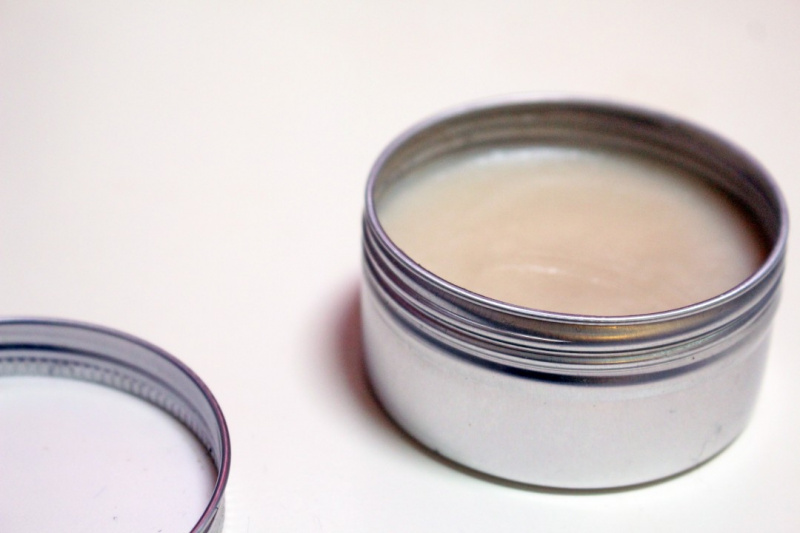
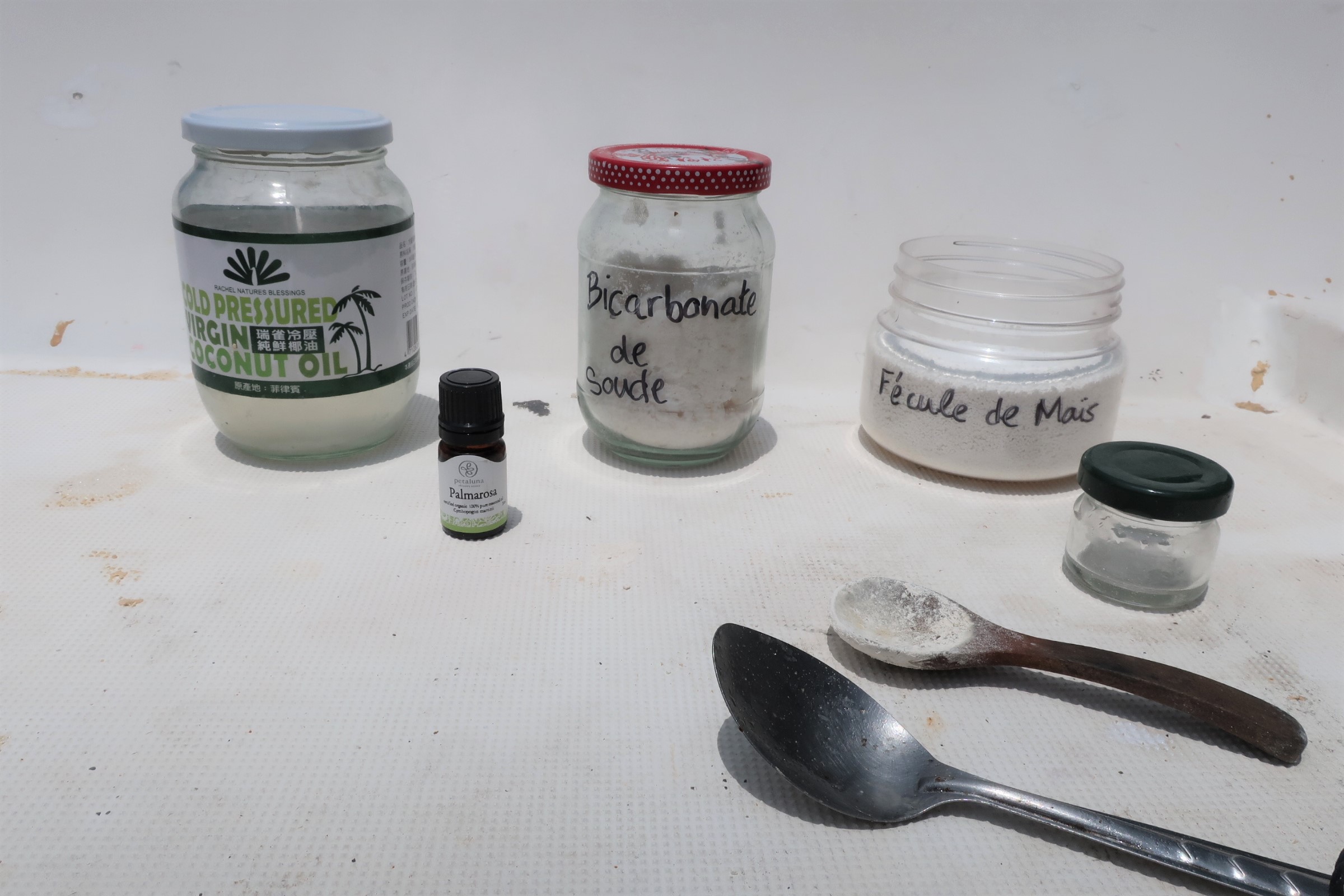
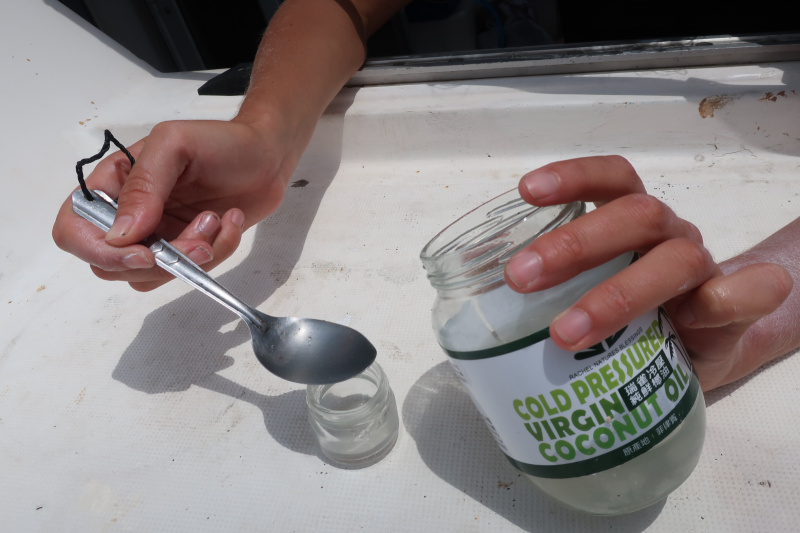
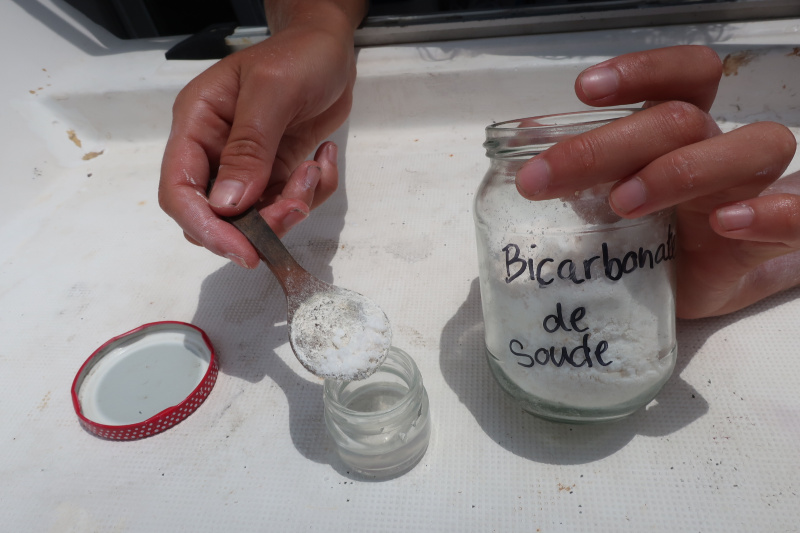
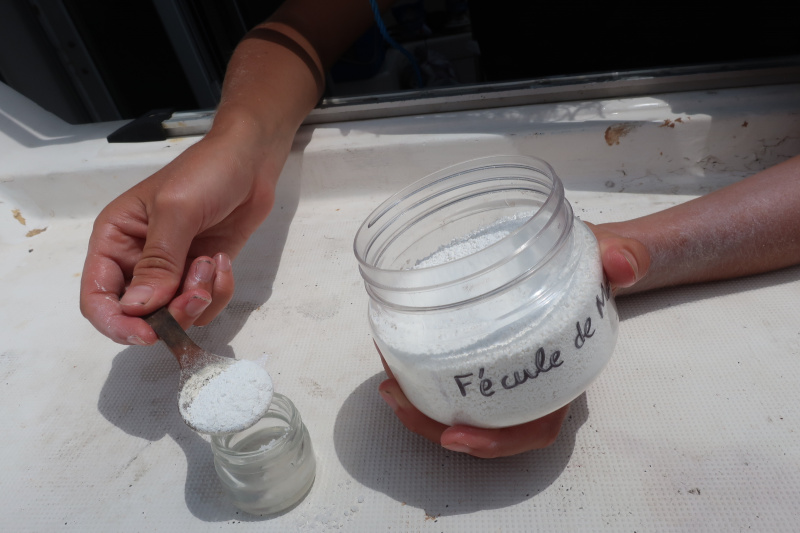
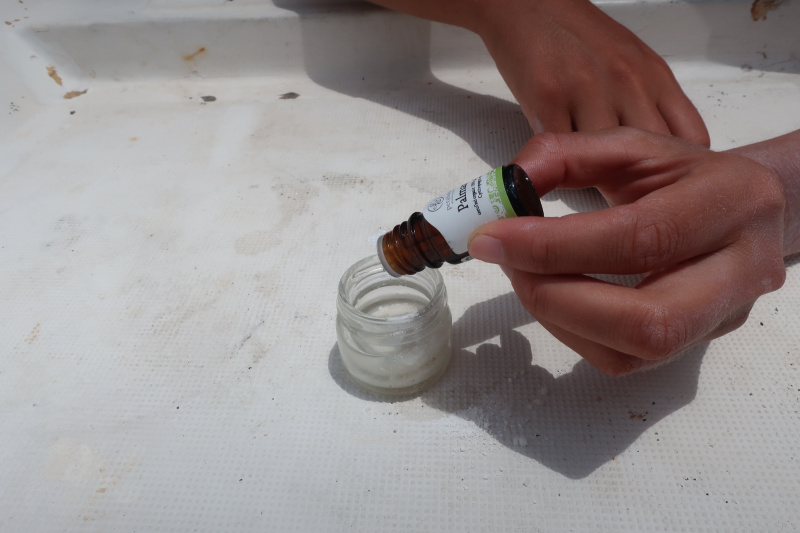
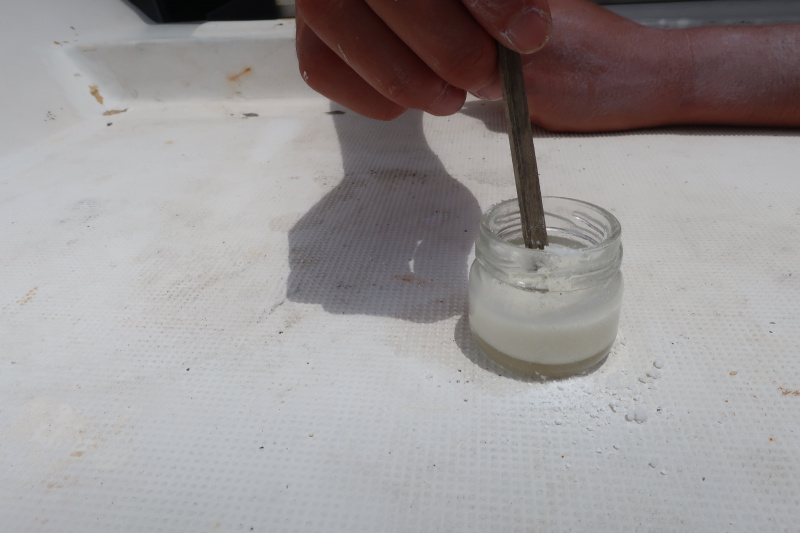
 Français
Français English
English Deutsch
Deutsch Español
Español Italiano
Italiano Português
Português